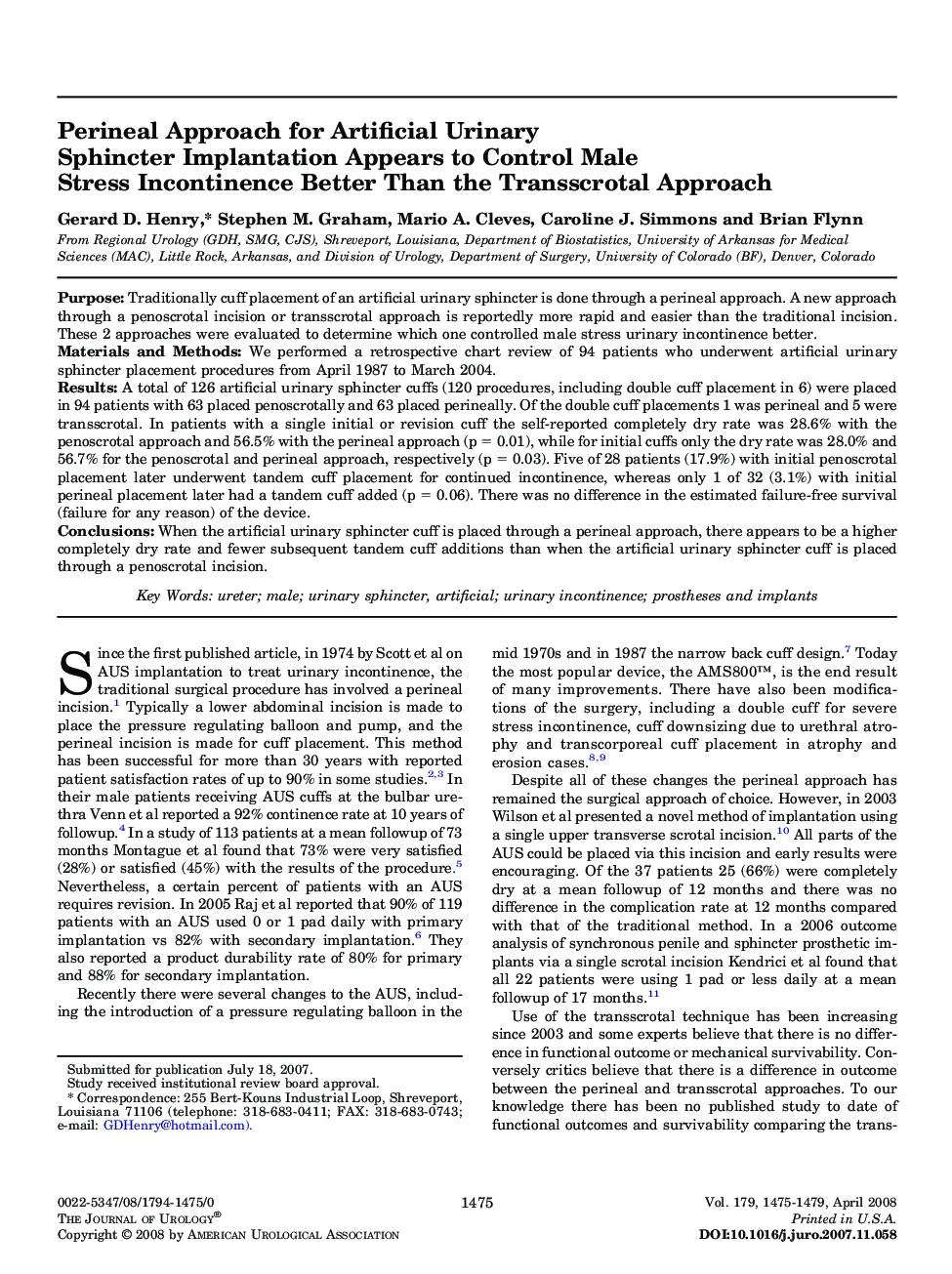| Article ID | Journal | Published Year | Pages | File Type |
|---|---|---|---|---|
| 3878279 | The Journal of Urology | 2008 | 5 Pages |
PurposeTraditionally cuff placement of an artificial urinary sphincter is done through a perineal approach. A new approach through a penoscrotal incision or transscrotal approach is reportedly more rapid and easier than the traditional incision. These 2 approaches were evaluated to determine which one controlled male stress urinary incontinence better.Materials and MethodsWe performed a retrospective chart review of 94 patients who underwent artificial urinary sphincter placement procedures from April 1987 to March 2004.ResultsA total of 126 artificial urinary sphincter cuffs (120 procedures, including double cuff placement in 6) were placed in 94 patients with 63 placed penoscrotally and 63 placed perineally. Of the double cuff placements 1 was perineal and 5 were transscrotal. In patients with a single initial or revision cuff the self-reported completely dry rate was 28.6% with the penoscrotal approach and 56.5% with the perineal approach (p = 0.01), while for initial cuffs only the dry rate was 28.0% and 56.7% for the penoscrotal and perineal approach, respectively (p = 0.03). Five of 28 patients (17.9%) with initial penoscrotal placement later underwent tandem cuff placement for continued incontinence, whereas only 1 of 32 (3.1%) with initial perineal placement later had a tandem cuff added (p = 0.06). There was no difference in the estimated failure-free survival (failure for any reason) of the device.ConclusionsWhen the artificial urinary sphincter cuff is placed through a perineal approach, there appears to be a higher completely dry rate and fewer subsequent tandem cuff additions than when the artificial urinary sphincter cuff is placed through a penoscrotal incision.
